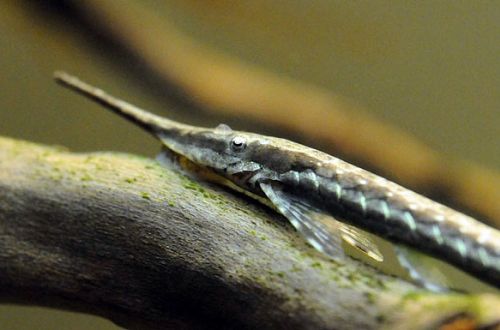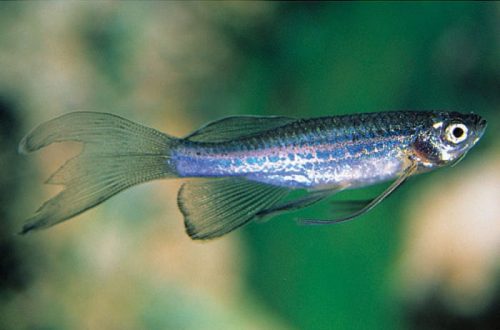
Three-banded Barbus
The three-banded barb, scientific name Desmopuntius trifasciatus, belongs to the Cyprinidae family. The name of the fish indicates the pattern of the body, consisting of rows of dark stripes. It is not often found in aquariums, although it is perfectly compatible with many freshwater species and does not make high demands on its content.

Contents
Habitat
It comes from Southeast Asia from the island of Borneo (Kalimantan). Inhabits peat bogs and associated rivers and streams. The natural habitat is characterized by dark, brown-colored water due to the abundance of dissolved tannins formed as a result of the decomposition of plant organic matter. Natural reservoirs have dense aquatic vegetation, the bottom is heavily silted and littered with fallen leaves, branches and tree roots.
Brief information:
- The volume of the aquarium – from 200 liters.
- Temperature – 20-25°C
- Value pH — 5.0–7.0
- Water hardness – 1–10 dGH
- Substrate type – dark soft
- Lighting – any
- Brackish water – no
- Water movement – little or no
- The size of the fish is 8–10 cm.
- Food – any food
- Temperament – peaceful
- Keeping in a group of 8-10 individuals
Description
Outwardly similar to Barbus five-line and Barbus linear, living in a similar environment. Adult individuals reach a length of up to 10 cm. The color of the body is silver-pink with rows of black longitudinal stripes. A wide dark stripe stretches along the lateral line, one narrow stripe stretches along the sides of it. Fins and tail are translucent. On the head, near the mouth, there are filamentous processes – antennae; in nature, with their help, the fish looks for food in dark waters.
Food
Not demanding on the composition of food. In the home aquarium, it will accept most popular foods, such as dry flakes, granules, as well as bloodworms, brine shrimp, daphnia, live or frozen. It is desirable that herbal supplements be present in the diet.
Maintenance and care, arrangement of the aquarium
The recommended tank sizes for a small flock of Tri-ribbon Barbs start at 200 liters. The design should resemble the natural habitat and include areas with dense vegetation from among shade-loving plants and a dark, soft substrate. The lighting is subdued. An additional design element can be dried leaves of trees, which, in the process of decomposition, will give the water a brown tint, and will also contribute to the establishment of optimal hydrochemical values, acidifying the water. Read more in the article “Which tree leaves can be used in an aquarium.”
When keeping Barbs, as well as any other fish, it is important to provide stable water conditions suitable for a particular species. For this purpose, a productive filtration system is installed and obligatory maintenance of the aquarium is carried out, which includes: weekly replacement of part of the water (15–25% of the volume) with fresh water, regular removal of organic waste (food leftovers, excrement, etc.), check and if necessary, adjust the pH and dGH values.
Behavior and Compatibility
Peaceful mobile fish, prefers to be in a flock of at least 8-10 individuals. It gets along well with other species from Southeast Asia that live in a similar environment.
Breeding / breeding
At the time of writing, there is no reliable information about the breeding of Triple Barbs in home aquariums. This is largely due to the low prevalence of the species in amateur aquariums.
Fish diseases
In a balanced aquarium ecosystem with species-specific conditions, diseases rarely occur. Often, diseases are caused by environmental degradation, contact with sick fish, and injuries. If this could not be avoided and the fish shows clear signs of illness, then medical treatment will be required. Read more about symptoms and treatments in the Aquarium Fish Diseases section.





